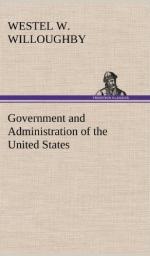Internal revenue duties are those taxes collected by the government from its own citizens upon a small class of articles produced in this country. The chief items of this class are distilled liquors, tobacco, and oleomargarine. In 1889, out of the $130,894,434 received from internal revenue, there was derived from spirits and fermented liquor $98,036,041; tobacco, $31,866,861; oleomargarine and miscellaneous, $991,532. These duties are collected by Government collectors stationed in every United States district, who visit the distilleries, collect the taxes, and see that the law is enforced. In several Southern States attempts to evade the law are very frequent and difficult of detection. The expenses of the vast postal system conducted by the Federal Government are very nearly defrayed by the charges made for postage, and the amount received by fees more than equals the expense of the Patent Office.
_#The State and Local Taxes#_ are generally, for convenience, collected at the same time, and by the same officials, but independently of the Federal government. The Constitution of the United States forbids the States to derive a revenue from duty upon goods imported or exported. The States are, therefore, for the most part, restricted to a direct tax on property for the support of their governments.
The general method for raising this tax is as follows: The legislature of the State, having determined what income is needed, apportion this sum among the counties, or, in New England, directly among the townships, in proportion to the value of the property situated within them, or establish a certain percentage tax on all property, to be collected in the same manner. So, similarly, the counties apportion among the cities and townships within their areas, in proportion to the value of their taxable property, not only what they have to pay to the State, but also the sums they have to raise for county purposes. Thus when the township or city authorities assess and collect taxes from the individual citizens, they collect at one and the same time three distinct taxes—the State tax, the county tax, and the city or township tax. Retaining the last for local purposes, they hand on the two former to the county authorities, who, in turn, retain the county tax, handing on to the State what it requires. Thus trouble and expense are saved in the process of collection, and the citizen sees on one tax paper all that he has to pay. The chief tax is the property tax, based on a valuation of property, and generally of all property, real and personal. Of this, by far the greater sum is realized from the tax on real property, (land and buildings on it). Cities and other local subdivisions, as has been stated, are raising their revenues more and more from the sale, taxation, or operation of such public franchises and rights as street-car lines, gas and waterworks. Those who fix the value of taxable property and thus determine the amount the




